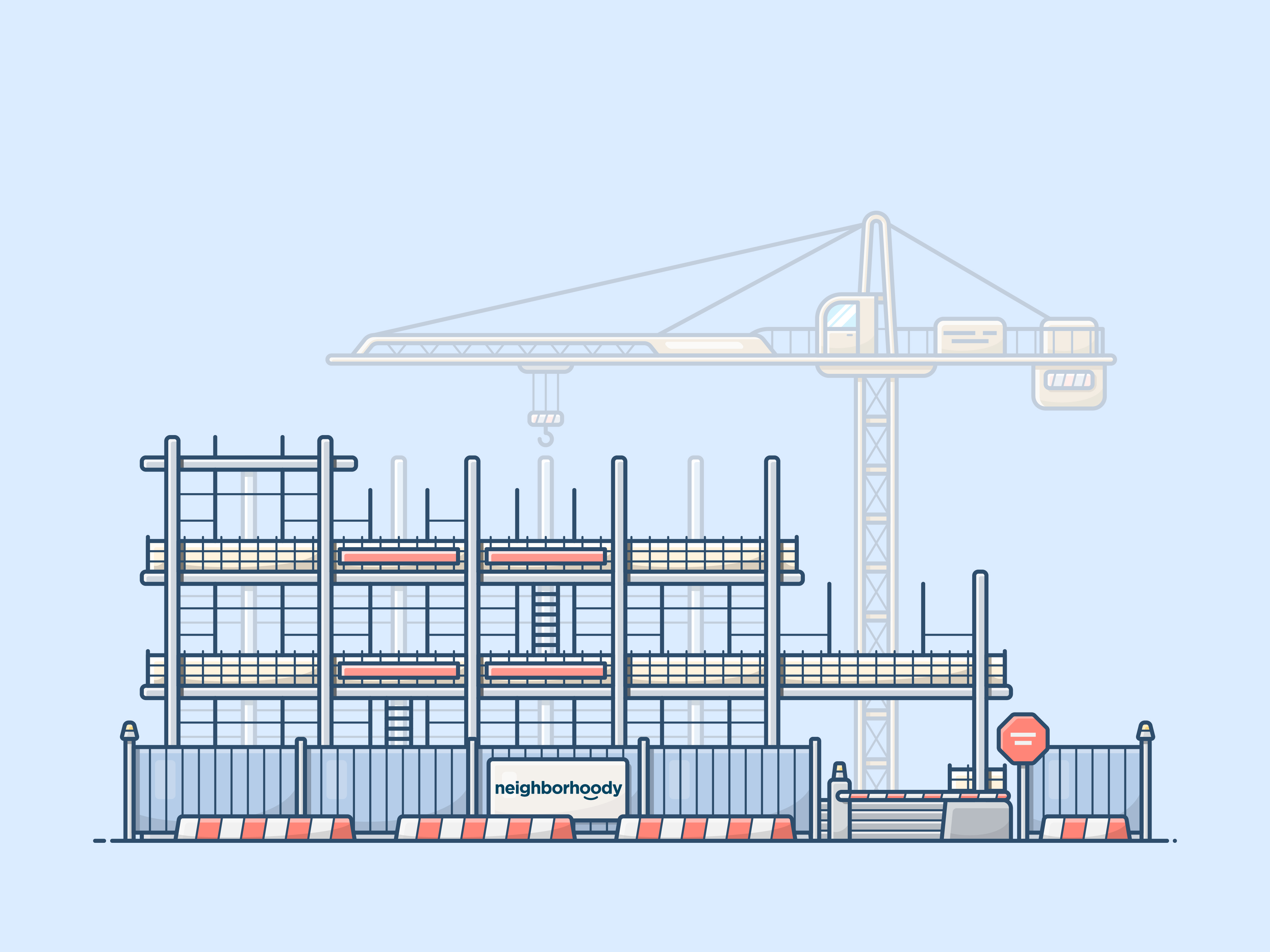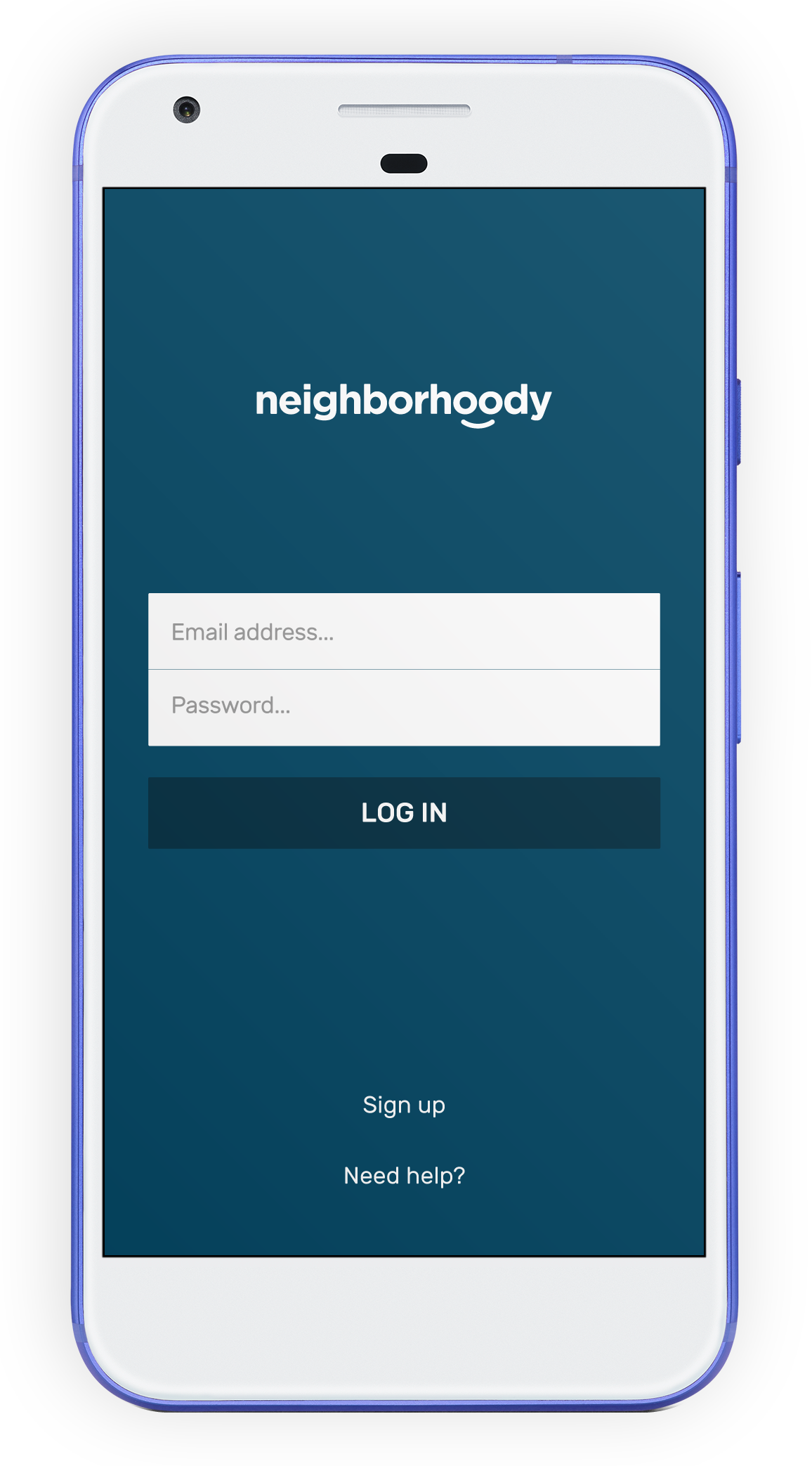We’re building Neighborhoody to simplify the way local communities and their organizations connect with and engage residents.
Deep Roots
I’m the fourth generation to work in a family owned & operated real estate business. My family’s business has fluidly shifted through multiple segments of the industry since the 1930’s, staking a claim in planned community management more than 50+ years ago as community management evolved early on from an idea to an industry. Deep roots in an age-old industry have driven me to take a vested interest in making radical positive impact, solving for immediate local needs, while presenting a solution to a global need simultaneously.
Necessity drives innovation
Necessity is a strong driving force for innovation and invention. What we’re building isn’t overly special. What we’re building is actually quite elementary – in fact, purposely designed to be so. What we’re building is designed to enhance neighborhood engagement while minimizing the effective output to manage such interaction(s). Community and resident expectations have changed with modern advancements, and the solutions we need to effectively manage those expectations must follow – we’re building solutions to maintain pace with modern expectations.
As an organization managing planned communities, we discovered we had a problem. And the thing is, it wasn’t isolated to our firm, our competitors, our region, or even our national associates. The problem was and is bigger than our individual business, regional industries, and affects local communities and neighborhoods across the globe. It was a problem caused and also solvable by the same contributing factor: Technological advancements in the distribution of information.
The Problem
Community engagement should not be about seclusion, rather the opposite. The demise of traditional information distribution by modern advancements in the digital age has created fragmented communication across numerous organizations and mediums. For us in the community association management industry, we can all agree our industry is a little behind in technological advancements.
In most cases, we can link discontent in the community to a single factor: inefficient communication. Inefficient and fragmented organization to resident communication and interaction, regardless of prescribed frequency, is the root cause of most discontent within localized communities.
The problem, that so many others are trying to solve for, shouldn’t be about keeping people out – in my opinion, those which believe that is our core problem, have it completely wrong. The problem worth solving for is the consolidation and effective distribution of community interactions or engagement. The simplest way I can describe what our long-term goal is: Better engagement between local community organizations and individual members by simplifying the distribution and the management of communications and interaction.
Inefficient and fragmented organization to resident communication and interaction, regardless of prescribed frequency, is the root cause of most discontent within localized communities.
An “Industry” Fragmented by Labels
If you didn’t know, our specific industry (planned community management) spans across the globe bearing different labels and classifications (i.e. Planned Community, Homeowners’ Association, Body Corporate, Strata, etc…). To my knowledge, CAI, thanks to international expansion efforts by Tom Skiba and the team he leads, seems to be the only organization actively embracing industry globalization, at the moment. Industry specific, geographical-driven labels silo global progression to some extent. Not to mention, the vast amount of varying governmental influence in the mix that inhibits progress from crossing borders due to regional rules & restrictions.
As we move towards globalization, what’s stopping us from becoming a synchronized, global industry? I’m a big fan of competition, but this is not about competing with other regional industries. Neighborhoody’s goal is to keep the competition of community management thriving at the local level, yet advance the global scheme as one. The problems we face individually as local communities and organizations are most likely the same problems others similar to us face locally, in their respective region.
Focusing only on solutions for improving the immediate local region will only further advance stable regions while leaving behind organizations located in geographically-impoverished areas which lack the resources or experience for improvement. With that in mind, this further supports our decision to solve for the global marketplace, on a local level, knocking down borders between alternatively named “industry labels” driven by geographical boundaries/governmental influence.
We aren’t building Neighborhoody to solve small, isolated local problems. We’re building Neighborhoody to solve for local community needs, for communities everywhere. Working towards anything smaller than global advancement would silo the progression of geographically arranged community organizations further.
Technology is no longer just a competitive advantage, It’s an expectation.
Although this is my personal opinion, yet supported by the widespread adoption of technology by community organizations world-wide, planned communities and their counterparts (i.e. Management companies, board members, residents, etc.) so desperately seek change, following suit to the globalization of our economy and modern advancements in consumer technology. Change, or implementations of such systems, is no longer just a competitive advantage or want for the organization and/or their managing agent; it’s a need residents have come to expect driven by consumer technological advancements they interact with daily – a level of advancement at which our industry has lagged in previously.
Some still preach that “technology” is a competitive advantage for their management company or agency. That’s a fair argument. But, technology is not a want, it’s a need for success this day in age. The enhancement to the way we as humans interact and engage with each other must be embraced by community organizations to meet the demand and expectations of modern citizens. Sure, you can leverage technology as a competitive advantage, but if you aren’t working to improve or adopt technology at all, you’re in for a rude awakening.
Technology is no longer just a competitive advantage or want for the community organization; it’s a need residents have come to expect driven by consumer technological advancements they interact with daily.
Factors for Success
What we’re proposing isn’t doable without vast community/industry involvement and a disciplined, long-term vision. Even if you aren’t able to actively participate in and utilize the solutions we make available, whether due to industry-specific uninvolvement, financial, regional, political, and/or any other reasoning, input for platform advancement is always welcome and encouraged. Some specific factors I believe that are key to our success:
-
Community driven
Without the active participation and feedback of industry professionals, volunteers, enthusiasts, and those alike, we will not be able to build solutions that solve real problems. Community involvement in not only product development but advocation of platform adoption will increasingly help us all advance our industry.
-
Want vs. Need focused discernment
The ability to discern an actual solution need vs want will have an immeasurable effect on the complexity of solutions brought to market. Without taking the simplest approach to solving an actual problem which local communities face, bloat will occur, which will inadvertently affect our ability to move swiftly and deliver real, necessary solutions applicable to the majority.
-
Results, not process
Focusing on high performance, rapidly delivered results will increasingly grant more opportunity for growth and improvement than restrictive processes that prevent short-term failures and inhibit creative thinking and solutions.
-
Affordable engagement, for all communities
How can we, with the immense factors and variables contributing to the expendable resources of individual community organizations, make our solution affordable for all communities? Early on, this might be unachievable. But, factoring in the global economies of scale, with time, this will most definitely be achievable. More on this at a later time…
-
Simplicity through familiarity
Innovation, not invention. Prevent further industry lag by adopting proven technological procedures and modern design principles. Promote rapid user adoption and solution familiarity through low-touch, globally-managed, simple-to-use, and automated solutions.
-
Limited, unconstrained access
Do local, community-exclusive private and invite-only social networks provide greater value than open and transparent counterparts? Seclusion breeds curiosity, but also screams obscurity. Understandably, personal and confidential information must remain under restricted control, but regular community engagement is better shared cross-organizationally and with little or no unreasonable constraint to access.
In Summary
We’re proposing positive impact to an industry somewhat reluctant to disruption, yet so desperately in need of adopting modern advancements to meet the needs of modern engagement. Our initial solution to be released to market, Community Sites, which official community associations and management companies can sign up for now, is far from perfect. In fact, it’s not even the tip of the iceberg of what we have planned – it’s more like a thin layer of snow on top of the iceberg. But, it’s crucial to understand that Community Sites is the foundation which is necessary to accomplish our long-term goals.
It helps to know we aren’t building Neighborhoody for short-term gains. The long-term vision for Neighborhoody far surpasses a set of product features currently available.
If you live anywhere in the world, you’re part of a community. The way the world interacts has changed, so must local communities and the associated organizations. To put it simply, our mission is:
Better community engagement
p.s. If you’re interested in helping us achieve what I’ve just briefly outlined above, please reach out.





